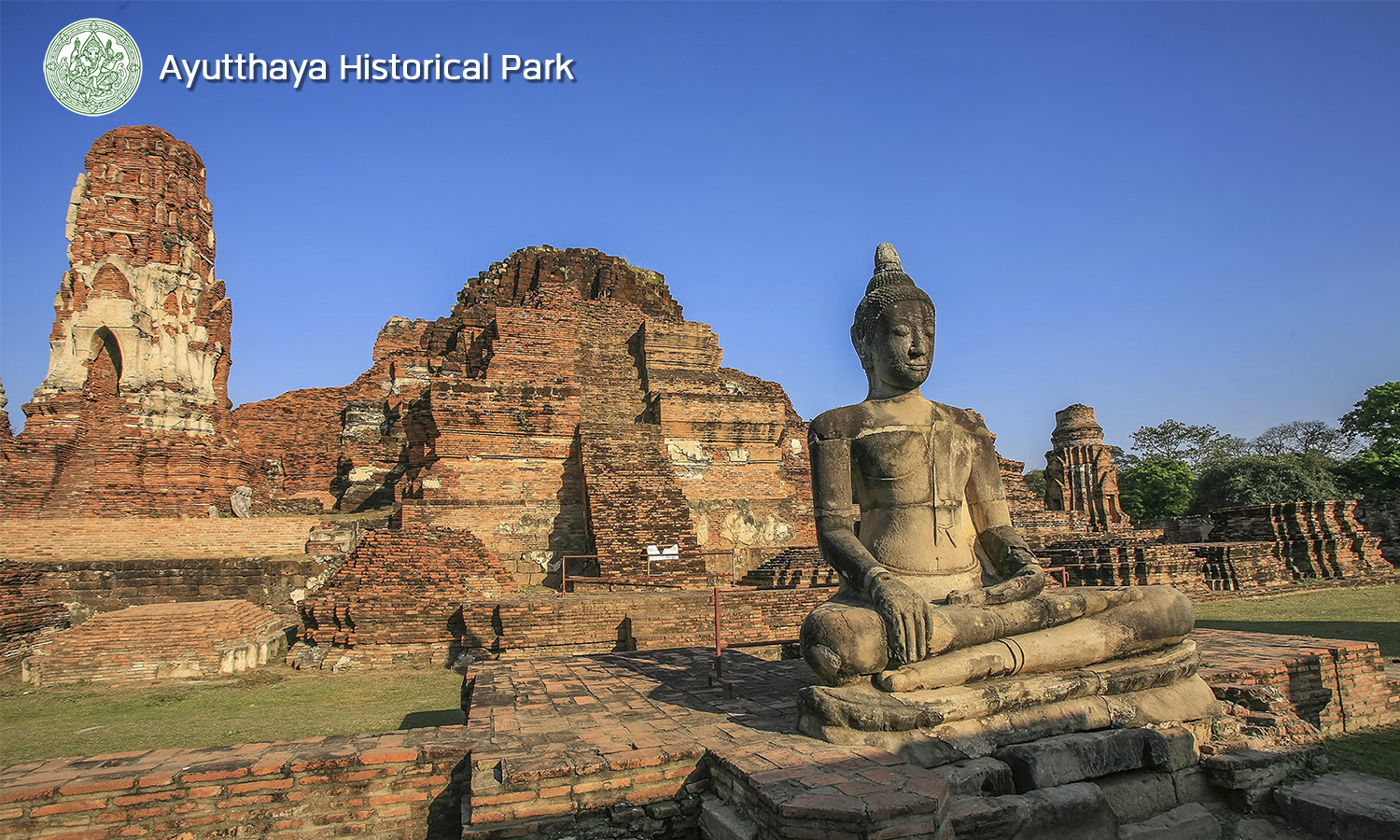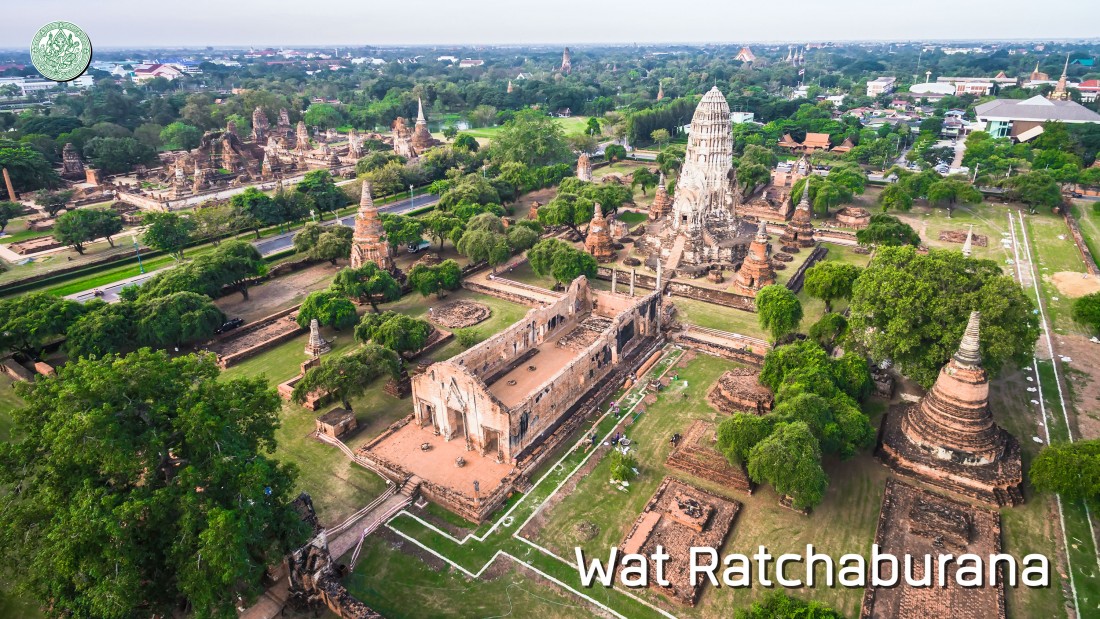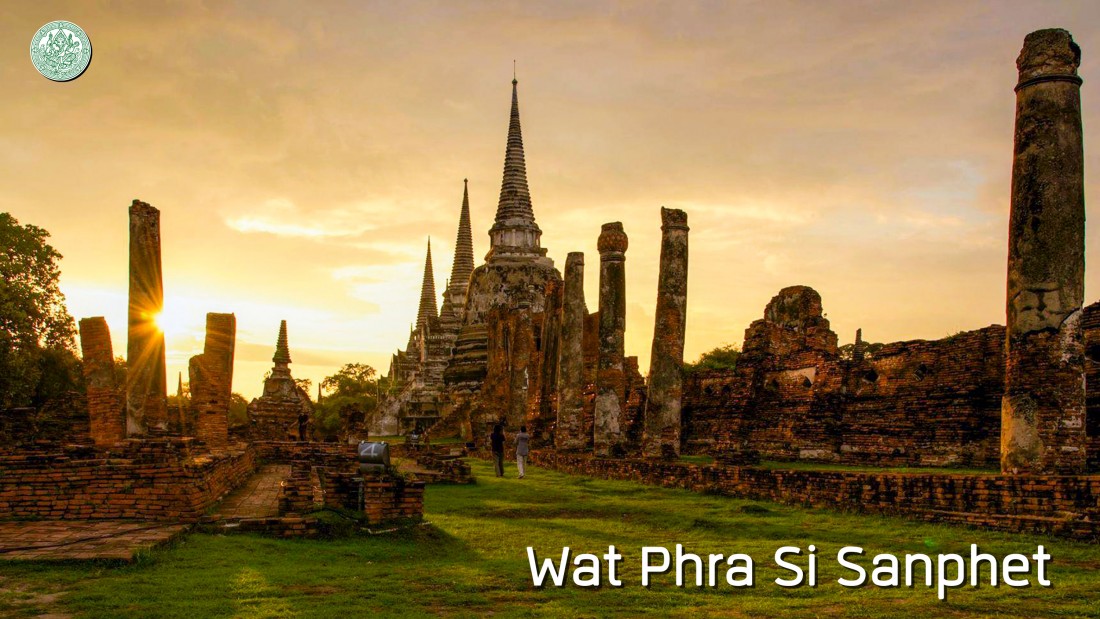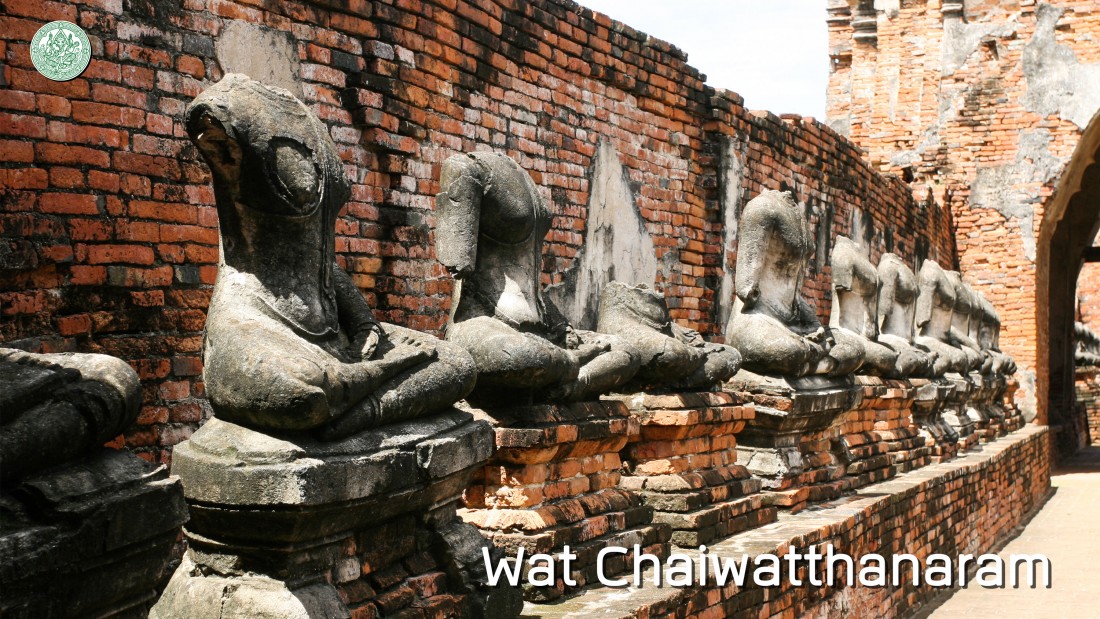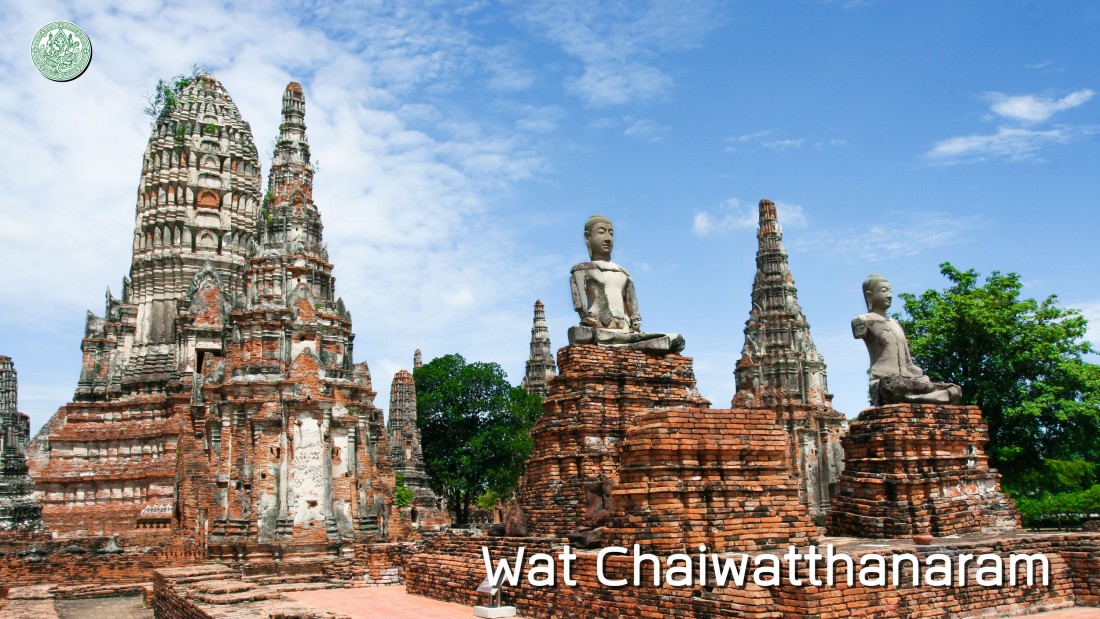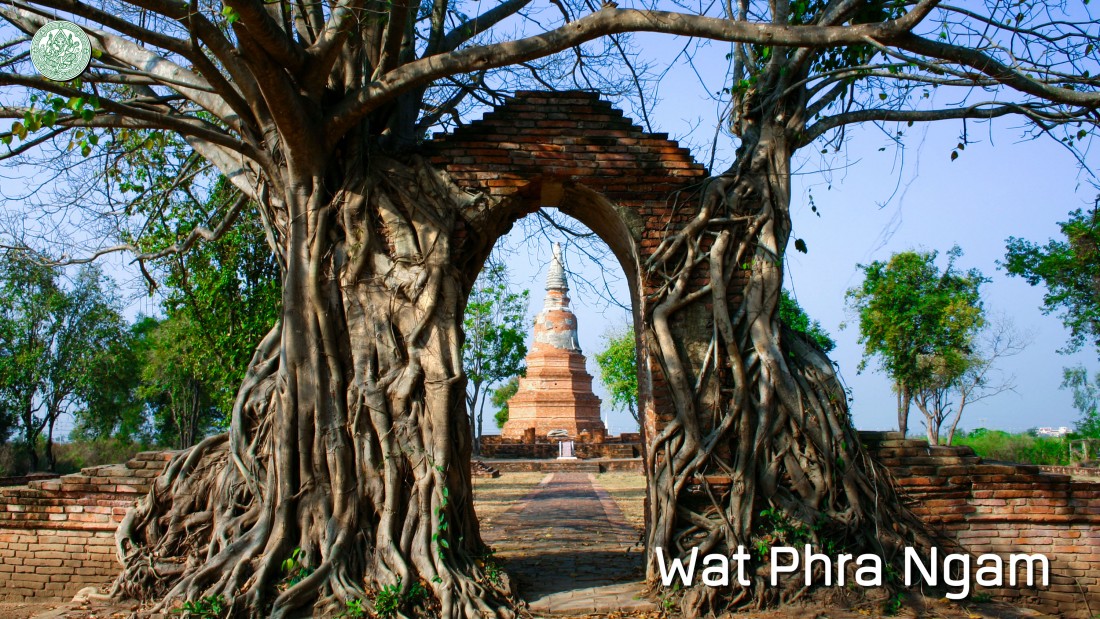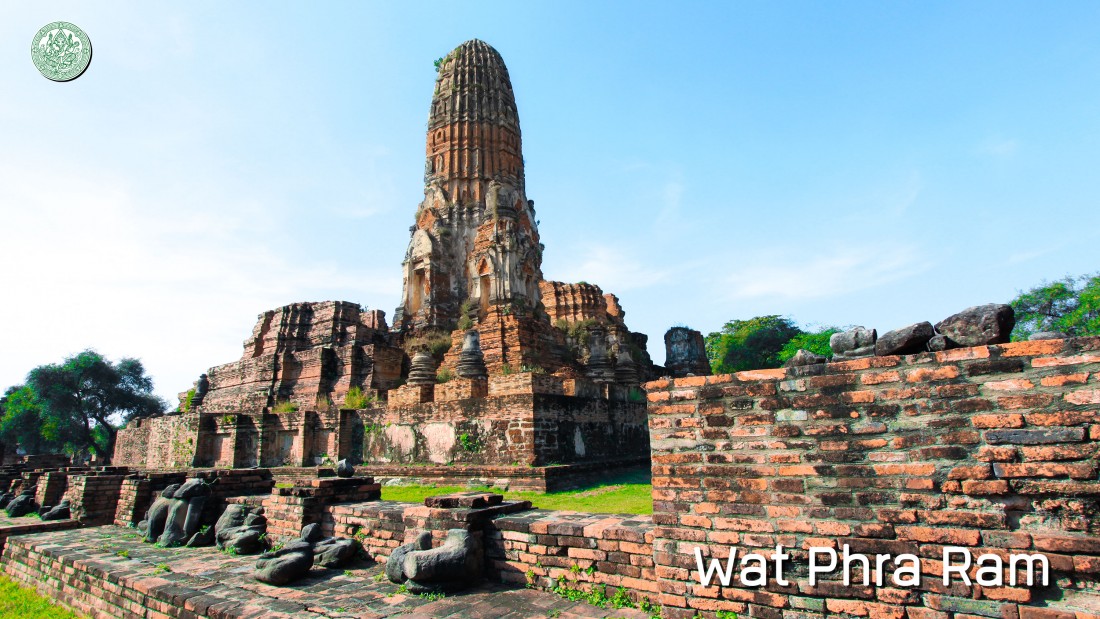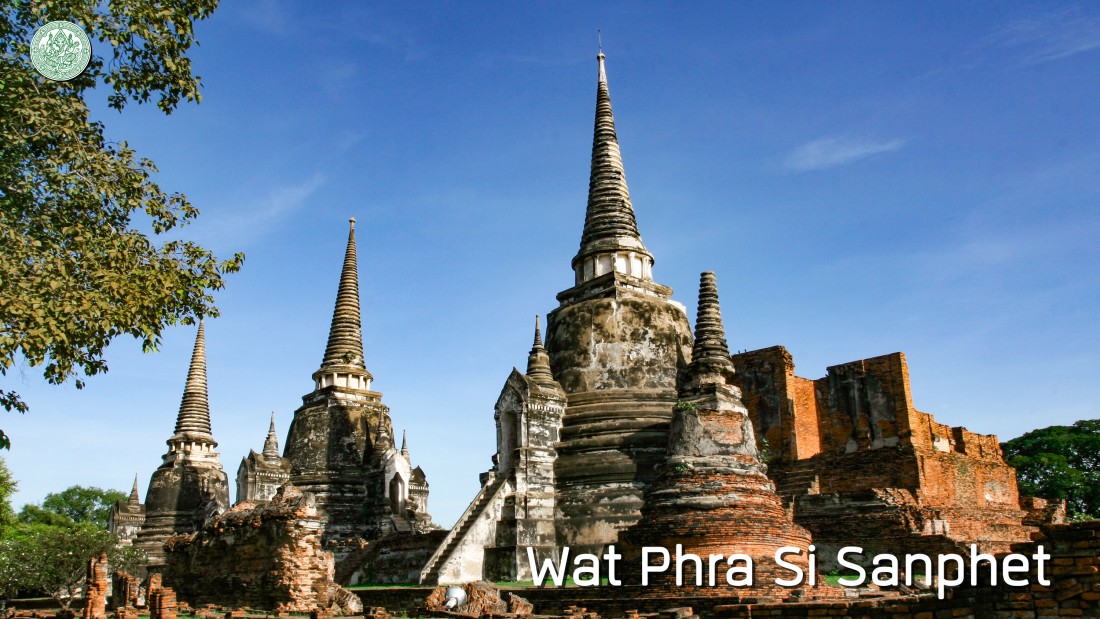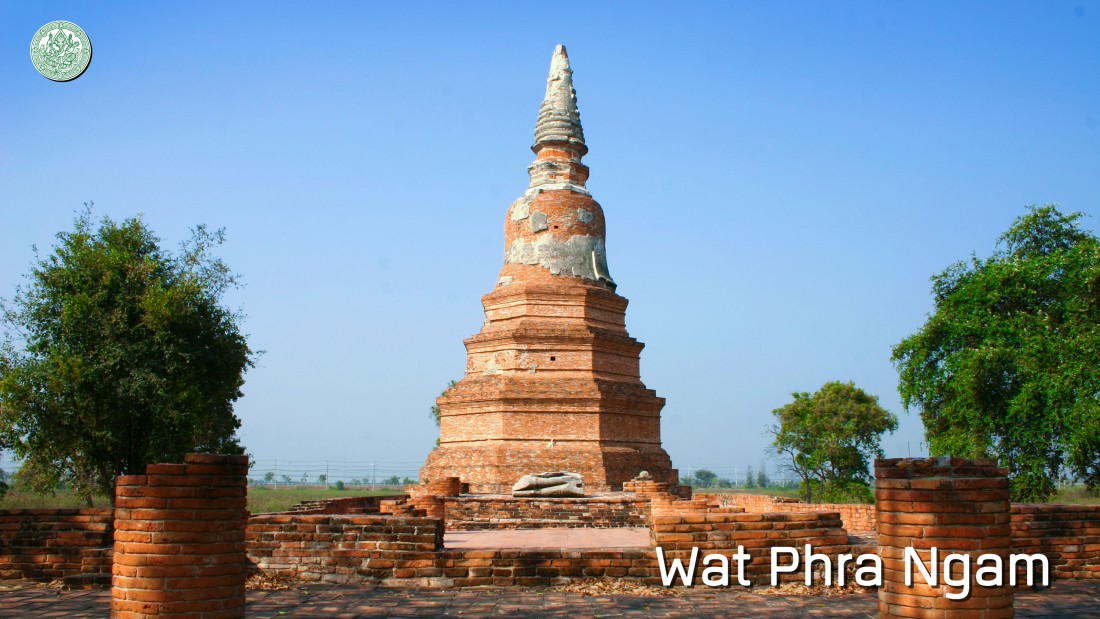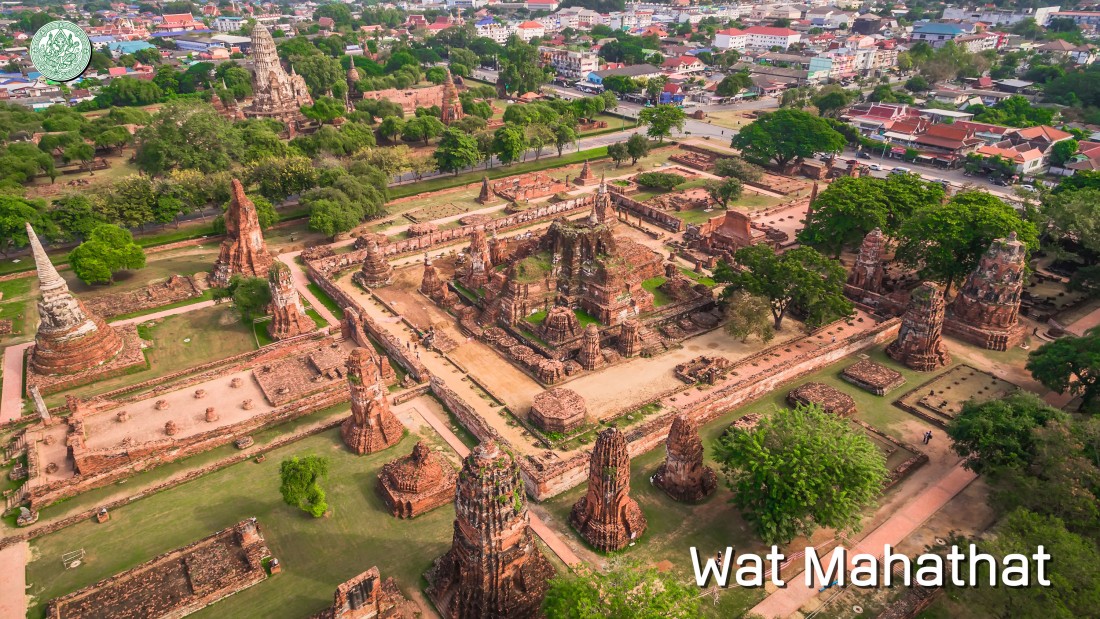Historical Background and Importance
|
Historical importance Krungsri Ayutthaya is situated on a low plain of Central Thailand which is the confluent point of three major rivers likes Chao Phraya River, Pa Sak River, and Lopburi River results in an abundance for agriculture which is a base of human settlement. Furthermore, it was the communicated junction that facilitated both internal and external trading causes Ayutthaya grown as the important economic and trading center in Asia during 20th – 23rd century Buddha. The area around Ayutthaya town appeared the trail of living before an establishment of Krungsri Ayutthaya as can be seen from the evidence in a royal chronicle that mentioned to a construction of Phrachao Phananchoeng, a large stucco Buddha in 1867 B.E. It illustrated that the community in this area was large and stable in economy at that time, said that it along with manpower and property to build the large Buddha. Until King Ramathibodi I (King U-Thong) established Krungsri Ayutthaya to be an administrative center in 1893 B.E. He gathered the city where were a relevant cousin together, such as Lopburi, Suphanburi, etc. After that, Krungsri Ayutthaya flourished respectively. It broadly extended the territory and stayed long about 417 years. There are 34 kings from 5 dynasties to govern which King Ekkathat is the lastest king before the end of Ayutthaya in 2310 B.E., results in the center of Thailand was moved to Krung Thonburi and Bangkok until now. Physical characteristics of Ayutthaya ancient town The center of Krungsri Ayutthaya is an island part with three surrounding rivers. The island is surrounded by another one layer of rampart. In the first time of town construction in the reign of King U-Thong, the rampart was constructed of soil and developed to be brick rampart in the reign of King Maha Chakkraphat. This rampart is length surrounding about 12.5 kilometers, 5 meters thick, 6 meters high, it consists of 99 gates that is 16 gun turrets around, 18 city gates, 16 topless doors, and 20 water gates. Ayutthaya was designed as a water town with complete and beautiful urban plan which originated from an intensely knowledge from nature. Apart from the three rivers bring abundance to Ayutthaya, when the rainy season comes, amount of water will be large and over rush down. Therefore, the town construction of Ayutthaya people is going to maintain an original river and also dig a canal additionally, especially in the north to the south as a straight line and connect with an original river cause the water was drain out from the town easily. It also results in having many rivers and canals in Ayutthaya that linked together both inside and outside the town. Furthermore, these various canal lines were divided as many small islands for being the areas of temple, palace, and dwelling. In addition, it has a road that parallels with the canal line. It often construct of soil and brick. There are many canal bridges about 30 bridges, e.g. wood bridge, laterite bridge, chain bridge, and drawbridge. For the area outside the town, it is a lower area that used for agriculture with throughout flow of river and canal. Both banks of these rivers were dwelling of Ayutthaya people which built the house as a group and alternated with temple. Administration in Ayutthaya Period Krungsri Ayutthaya was governed by the absolute monarchy which king is highest to govern the land. He assigned the royalty and lord to manage vessel town (Muaeng Luk Luang, Larn Luang) and border town, performed as eyes and ears of him. The dependency was governed by old royalty and depended on Krungsri Ayutthaya. King Borommatrailokkanat reformed an administration as well as reduced a power of province. He divided the government administration into 2 divisions like military affairs that responsible by Samuhakalahom and civilian affairs that responsible by Samuhanayok (chancellor). The civilian affairs was divided into 4 bureaus called “chatusadom” (the four pillars), e.g. Kromma Wiang or Nakhonban for cities and local administration, Kromma Wang or Thammatikorn for palace affairs, Kromma Khlang or Kosa Thibodi for trade and foreign affairs, and Kromma Na or Kasettathikan for agricultural affairs. This administrative system had been used through Ayutthaya period. Administration in Ayutthaya Period Ayutthaya society was divided into 2 stratifications as an upper class or master that consists of king who stayed in the highest position likes head of state. The second class is royalty, governor, and lord who stayed in a poisition between king and citizen performing to govern peasant and slave. Peasant was ordinary citizen as well as most of people in the society. The law required that peasant must belong to the master. It is the manpower control system of government service. The peasant were recruited to be in a royal government service about 6 months. For the peasant who want not to recruite, they have to pay money or matter to recompense called “Suay”. The peasant will not get salary, but they will get a protection from the master who they belong to. Slave was the labor of their master for their whole life. It caused from war and economy. The descendant of slave will be fostered by the master for their whole life. Trade and Economy A major occupation of Ayutthaya people was agriculture. Rice were the important product that could produce enough for citizen of the country and also an important goods which Ayutthaya exported to the foriegn market. Because Ayutthaya was an important trading center of the world, it recieved an income from both sending argosy to trade with foriegn and being the middle man. The royal court established a royal warehouse to monopolize some important goods which the foreign merchant must purchase and sell with royal court only. The international trade was under the Kromma Khlang (Finance Department) which supervised by Aokya Si Thammarat. At first, it was divided into 2 divisions that is Krom Tha Khwa, department under Indian lord or Chula Racha Montri that supervised trading with the western world and Krom Tha Sai, department under Chinese lord named Phraya Chotikarat Setthi which supervised trading with the eastern world. After that, in the late Ayutthaya Period when the European came to trade more and more, it results in establishing another one department as Krom Tha Klang, department under foreign lord. King and lord had agrosy to trade with foreign. Most chinese were employed as ship’s master and crew. The exported goods of Ayutthaya was agricultural products, celadon, and forest products, e.g. ivory, leather, wood, spices, mineral, etc. A part of main revenue of the royal court was from tribute, Suay, tax, especially taxes on international trade. Trading inside of the business quarter as well as the small and large market that located both inside and outside of the town performed as the center and the turning point of goods. The market in Ayutthaya consists of 2 kinds that are the large floating market about 4 places and the market about 72 places include 32 places at suburb and 40 places in town. These business quarters and markets consist of day and night fresh market and also the market where sale daily belongings (grocery) and identity goods of the quarter. International Relation Ayutthaya had a relationship with the foreign countries both Asian Countries and Western Countries. The relationship between Ayutthaya and the neighbouring countries, such as Myanmar, Mon, Cambodia, Laos, Vietnam, and Melayu were most relevant by society, culture, economy, and trade as a sister cities as well as a cousin or a dependency which have to war for competing a supremacy over each other. The relationship with another Asian Countries, e.g. China, Japan, India, and Persia often relevant by culture and trade. Espcially, chinese and persian were a government officer in the Finance Department supervising the international trade for Ayutthaya royal court. The art work in Ayutthaya Period appeared an influence of Chinese art, Indian art, and also Persian art. For the Western Countries, Portugal was the first country that contacted with Ayutthaya in the reign of King Ramathibodi II around the middle 21st century Buddha. After that, it had another western country followed to Ayutthaya, e.g. Spain, Holanda, England, France, etc. Cause of coming to Ayutthaya mainly was for trade and propagation of the Christianity. King of Ayutthaya was careful about Foreign policy implementation, he built a rapport with all countries that come in contact for leverage of each other. Apart from the economic benefit, the communication with the western countries result in Ayutthaya has learnt about modern science and technology, e.g. military matters, a construction of fortress and rampart as European design, a using of gun in war, knowledges of science and astronomy, waterworks, garden design, etc. Some westerners came to be the government officer as militiamen, mercenary, royal guard, and engineer. King permitted and gave a land for foreigner to set a village, trade station, and religious place to freely perform the religious rituals. Most of the foreigner village located at suburb. There are only some Chinese, Hindu, and Indian which is closely important with the royal court at first that could set their house inside of the town. Preservation Background of Phra Nakhon Si Ayutthaya After King Taksin declared independence, he moved the capital to locate at Krung Thonburi and pleased to evacuate Ayutthaya people to be a mainspring at Krungthonburi. When King Buddha Yot Fa Chulalok (Rama I) accessed to the throne to be the first king of Chakri Dynasty, he established Krung Rattanakosin in 2325 B.E. which had a demolition of brick from rampart and religious site of Krungsri Ayutthaya to build and strenghten Krung Rattanakosin. Until the reign of Phra Chom Klao Chao Yu Hua (IV), he had a royal policy to renew Ayutthaya. Therefore, he pleased to preserve and reconstruct the various historical sites in the island of Ayutthaya, e.g. built Chankasem Palace for being the pavilion, etc. Although this performing wasn’t completed in the reign of him, it was the initiation of a returning to focus Krungsri Ayutthaya again. Then, in 2451 B.E. which is the reign of King Chulalongkorn (Rama V), he pleased to preserve the land of Ayutthaya island to be public domain, disallow a private organization own this land. He assigned Phraya Boran Ratchathanin (Porn Dechakup), Samuha Thesaphiban, governor of Monton Krungkao at that time to survey and excavate the historical site of Ayutthaya as well as renovate an internal part of ancient palace. It was the beginning to preserve Phra Nakhon Si Ayutthaya as a position of being an archaeological and historical evidence at the first time. In 2475 B.E. after the administrative change, the government under the control of Luang Praditmanutham supported to have an enactment of transferring ownership of land which is a public domain of the land as well as the waste land inside of the rampart to own by the Ministry of Finance. In 2478 B.E., the Fine Arts Department, under the Ministry of Culture has begun to announce the registration of the important historical site in the island of Ayutthaya to be the national historical site about 69 places. In 2481 B.E., the Ministry of Finance transferred a land ownership of island of Phra Nakhon Si Ayutthaya to a private organization for land use with a propose to renovate a deserted town to be Trade and Administrative Center. In 2499 B.E., the government of Field Marshal Plaek Pibulsongkram has performed the excavation and renovation of the historical sites inside of the island of Phra Nakhon Si Ayutthaya, e.g. Wat Mahathat, Wat Ratchaburana, Wat Phra Si Sanphet, Wihan Phra Mongkhon Bophit, Golden Mount, etc. Then, in 2500 B.E., this performing was paused by an unrest event as well as a dissolution of the Department of Culture. In 2510 B.E., the cabinet approved the project of exploration, excavation, and reconstruction of the historical site inside of the island of Phra Nakhon Si Ayutthaya and the nearby areas. They assigned the Country Planning Department, under the Ministry of Interior, the Fine Arts Department, and Phra Nakhon Si Ayutthaya City Municipality to be responsible for this performing together. In 2511 B.E., the Fine Arts Department was allocated the budgets about 1,000,000 Bahts for performing the excavation and reconstruction of the important historical sites as the Development Project of an island of Ayutthaya. In 2519 B.E., the Fine Arts Department announced the area zone inside of an island of Ayutthaya with the areas of 1,810 Rai (2.896 square kilometers) to be the historical site in the Government Gazette, on 27th July 2519. In 2525 B.E., the Fine Arts Department established the Ayutthaya Historical Park Project to supervise and administrate the historical sites where were registered with the areas of 1,810 Rai (2.896 square kilometers). In 2530 B.E., the Fine Arts Department has begun the project of creating master plan of the Preservation and Development Project of Phra Nakhon Si Ayutthaya Historic Town and the Nearby area. In 2534 B.E., UNESCO resolved to register Phra Nakhon Si Ayutthaya Historic Town in the World Heritage List on 13th December 2534 at Carthage City, Tunisia with a realization of the greatness of Krungsri Ayutthaya. In 2536 B.E., the cabinet approved the principle according to the master plan of Phra Nakhon Si Ayutthaya Historic Town Preservation Project on 23rd March 2536 In 2540 B.E., the Fine Arts Department announced the land boundaries of Phra Nakhon Si Ayutthaya historical site in the area of island with additional area about 3,000 Rai (4.8 square kilometers) in the Government Gazette, 114th volume, 62nd part, 40th page, on 21st January 2540, results in the areas of 4,810 Rai (7.696 square kilometers) to be the historical site area. During 2537 and 2544 B.E., the Fine Arts Department has performed the various project according to the master plan. It received a budget of 862.73 million Bahts from the government and the private organization. Since 2548 B.E. until the present day after the master plan had ended, the Fine Arts Department has held the principle of the old master plan to preserve and develop the Phra Nakhon Si Ayutthaya Historic town continuously and also created the new master plan for declaration later.
|


